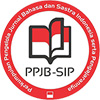Values of Literary Texts for Language Pedagogy: A Practical Proposition
Sari
Fiksi dan karya sastra telah diklaim memiliki potensi yang menjanjikan sebagai sumber materi untuk pengajaran bahasa kedua meskipun yang menentang gagasan tersebut beranggapan bahwa sastra tidak cocok untuk pedagogi bahasa kedua. Namun demikian, ada studi kasus empiris yang mentunjukkan keberhasilan dan/atau keunggulan menggunakan sastra untuk mengajar bahasa kedua. Studi menunjukkan bahwa sastra masih memiliki banyak cara yang ditawarkan dalam memfasilitasi pembelajaran bahasa kedua. Artikel ini akan menjelaskan nilai-nilai dari tiga jenis teks sastra, yaitu novel, puisi, dan drama untuk pedagogi bahasa dan menggambarkan kegiatan kelas yang dapat diterapkan dengan menggunakan tiga contoh teks tersebut.
Fiction and literary work has been claimed to have promising potential as a source of materials for second language teaching although opponents of that idea argue that literature is not suitable for second language pedagogy. Nevertheless, there have been empirical case studies which report the success and/or advantages of using literature for teaching a second language. Studies suggest that literature still has much to offer in facilitating second language learning. This article will elucidate the values of three types of literary texts, namely novels, poetry, and plays, for language pedagogy and illustrate classroom activities that can be carried out using three examples of texts.
Keywords: Fiction, literary text, language pedagogy
Teks Lengkap:
PDF (English)Referensi
Carter, R. & Long, M. N. (1990). Testing literature in EFL classes: tradition and innovation. ELT Journal, 44(3), 215-221. doi:10.1093/elt/44.3.215
Dörnyei, Z. (2001). Motivational strategies in the language classroom. New York: Cambridg University Press.
Edmondson, W. (1997). The role of literature in foreign and teaching: Some valid assumptions and invalid arguments. AILA Review, 12(1995/6), 42-55.
Ellis, R. (2005). Principles of instructed language learning. System, 33(2), 209-224.
Fish, H. (1989). Playing with plays: Increasing student involvement with dramatic texts. In R. Carter, R. Walker, C. Brumfit (Eds.), Literature and the learner: Methodological approaches (pp. 68-74). Hong Kong: Modern English Publications.
Gardner, R. C., Tremblay, P. F., & Masgoret, A. (1997). Towards a full model of second language learning: An empirical investigation. Modern Language Journal, 81(3), 344-62.
Gass, S. M. & Mackey, A. (2015). Input, interaction, and output in second language acquisition. In B. Van Patten & J. Williams (Eds.), Theories in second language acquisition (pp. 180-206). New York: Routledge.
Hanauer, D. (1997). Poetry reading in the second language classroom. Language Awareness, 6(1), 2-16.
Hanauer, D. I. (2001). The task of poetry reading and second language learning. Applied Linguistics, 22(3), 295-323.
Kennedy, G. (2003). Structure and meaning in English: A guide for teachers. Harlow, UK: Pearson Longman.
Lazar, G. (1990). Using novels in the language-learning classroom. ELT Journal, 44(3), 204-214.
Lazar, G. (1993). Literature and Language Teaching. A guide for teachers and trainers. Cambridge: Cambridge University Press.
Macalister, J. (2007). Implementing extensive reading in an EAP programme. ELT Journal, 62. doi:10.1093/elt/ccm021
Miccoli, L. (2003). English through drama for oral skills development. ELT Journal, 57, 122-129.
Nation, I. S. P. & Macalister, J. (2010). Language curriculum design. New York: Routledge.
O’Halloran, K. (2015). Creating a film poem with stylistic analysis: A pedagogical approach. Language and Literature, 24(2), 83-107. doi: 10.1177/0963947015571022
Pellicer-Sanchez, A. & Schmitt, N. (2010). Incidental vocabulary acquisition from an authentic novel: Do Things Fall Apart? Reading in a Foreign Language, 22(1), 31-55.
Swain, M. (2005). The output hypothesis: Theory and research. In E. Hinkel (Ed.), Handbook on research in second language learning and teaching (pp. 471-483). Mahwah, NJ: Lawrence Erlbaum.
VanPatten, B. & Williams, J. (2015). Early theories in SLA. In B. Van Patten & J. Williams (Eds.), Theories in second language acquisition (pp. 45-76). New York: Routledge.
DOI: https://doi.org/10.33387/tekstual.v20i1.4573
Refbacks
- Saat ini tidak ada refbacks.
Tekstual terindeks oleh:



